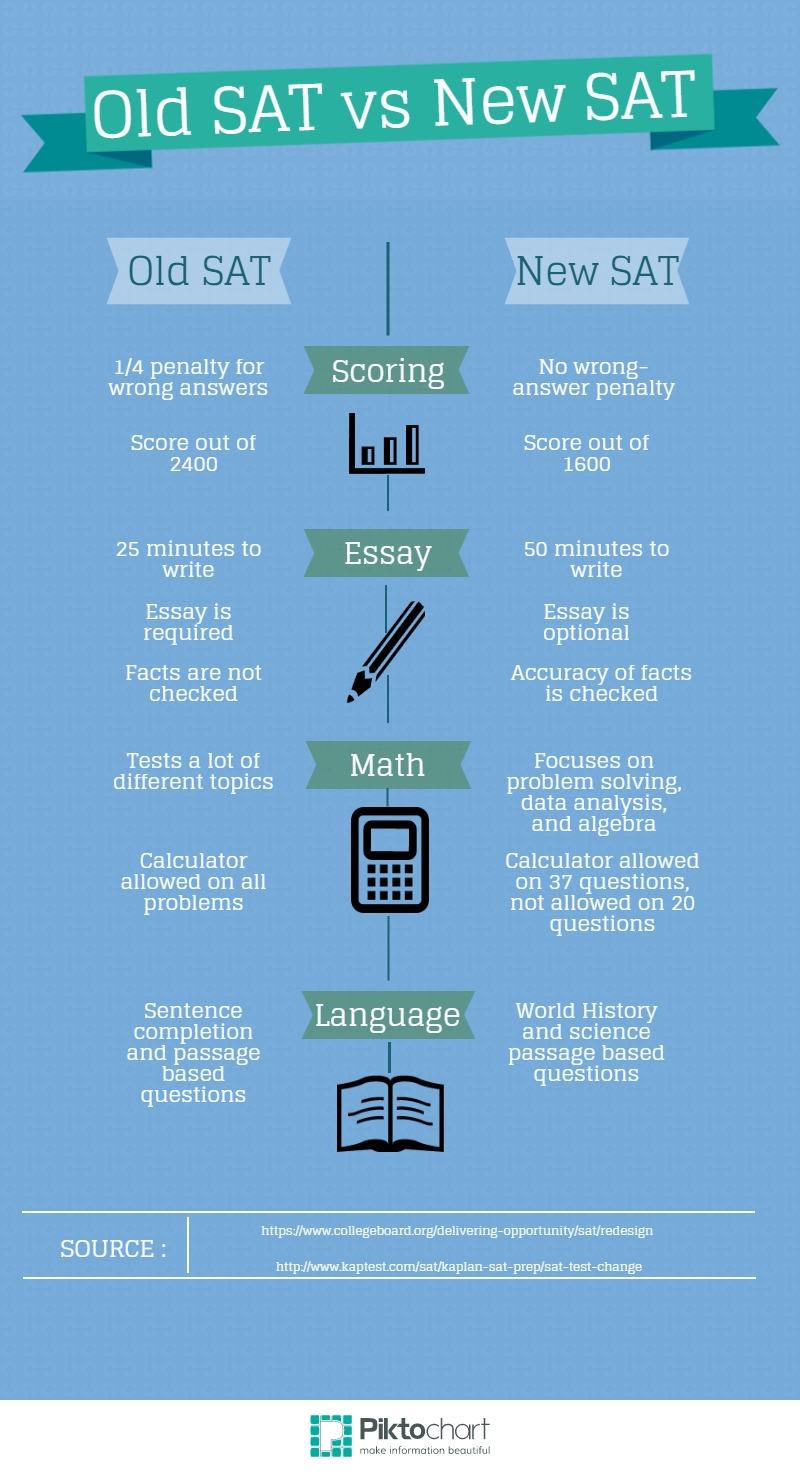The SAT is one of the biggest and most important steps towards college. For the first time in 11 years, the College Board has redesigned this test to make it more effective in measuring the student’s capabilities in succeeding in college. In March of 2016, the revamped SAT will be launched and taken by students all across the United States.
This is what you need to know about the changes in the SAT.
The College Board website has released information on the upcoming Redesigned SAT, including significant changes and a chart comparing the two SAT’s. The Kaplan test preparation company has also listed several important factors about the Redesigned SAT on their website.

Eight Significant Changes in the Redesigned SAT:
- Relevant words in passages: In the redesigned SAT, students will need to interpret meanings of relevant words based on how they are used in passages. This means that students will no longer have to memorize complicated vocabulary words. Instead, students will have to engage in active reading to decipher the meanings of the words. (Sample questions and explanations.)
- Analyzing Evidence: In the Evidence Based Reading, Writing, and Essay sections of the redesigned SAT, students will need to analyze evidence from a variety of sources in order to answer questions about the passage. The information sources for the questions will include graphs, passages from literature, and writings from humanities, science, history, and career-related writings. Students will need to selects quotes from the passage that support their previous answer. In the SAT Writing and Language Test, students will need to analyze paragraphs in order to find evidence and make sure that the passages are grammatically and substantly. The essay prompt will ask students to provide evidence to prove an author’s motives and write a persuasive essay. (Sample questions and explanations.)
- The Redesigned Essay: The essay section will be optional (Although some school districts and colleges require that you write it). This section will require students to read a passage and write an essay explaining how the author builds an argument to persuade readers. Students will need to analyze the author’s use of evidence, reasoning, and stylistic and persuasive elements. The prompt will always be shared in advance and remain the same. Only the passage students need to analyze will change. (Sample questions and explanations.)
- Focus on Important Math Subjects: The math section will focus on three areas of math: problem solving and data analysis, the Heart of Algebra, and Passport to Advanced Math. Problem solving and data analysis includes: using ratios, percentages, and proportional reasoning to solve questions with context about science, social sciences, and careers. The Heart of Algebra includes linear equations and systems. Passport to Advanced Math focuses on solving complex equations with critical thinking. The math section will also include sample questions from Geometry and Trigonometry. (Sample questions and explanations.)
- Problems Relevant to the Real-World: In the Evidence Based Reading and Writing section, reading questions will include literature (nonfiction and fiction), charts and graphs, and passages with varying educational subjects. Students will need to edit and revise texts about humanities, history, social science, and career contexts. (Sample questions and explanations.)
- Science, History, and Social Sciences Analysis: Students will be asked to use their reading, writing, language, and math skills to answer questions about science, history, and social studies. Students will be presented with challenging passages and graphs and similar topics in the Evidence-Based Reading and Writing section and the Math section. Students will need to read and comprehend passages, match graph data to texts, summarize information from passages and graphs and solve problems based on Science and Social Science. (Sample questions and explanations.)
- Founding Documents and Global Conversation: Every redesigned SAT test will include at least one passage from the United States founding documents or a text from a global conversation. Students will be required to analyze these passages just like all the others. (Sample questions and explanations.)
- Scoring: The new SAT will remove the ¼ point penalty so there won’t be any point deductions for wrong answers. The score will be out of 1600 rather than 2400, and sub-scores and insight scores will be available to show which areas need improvement.
Background Photo Illustration Credit: Jessie Snyder/The Foothill Dragon Press









